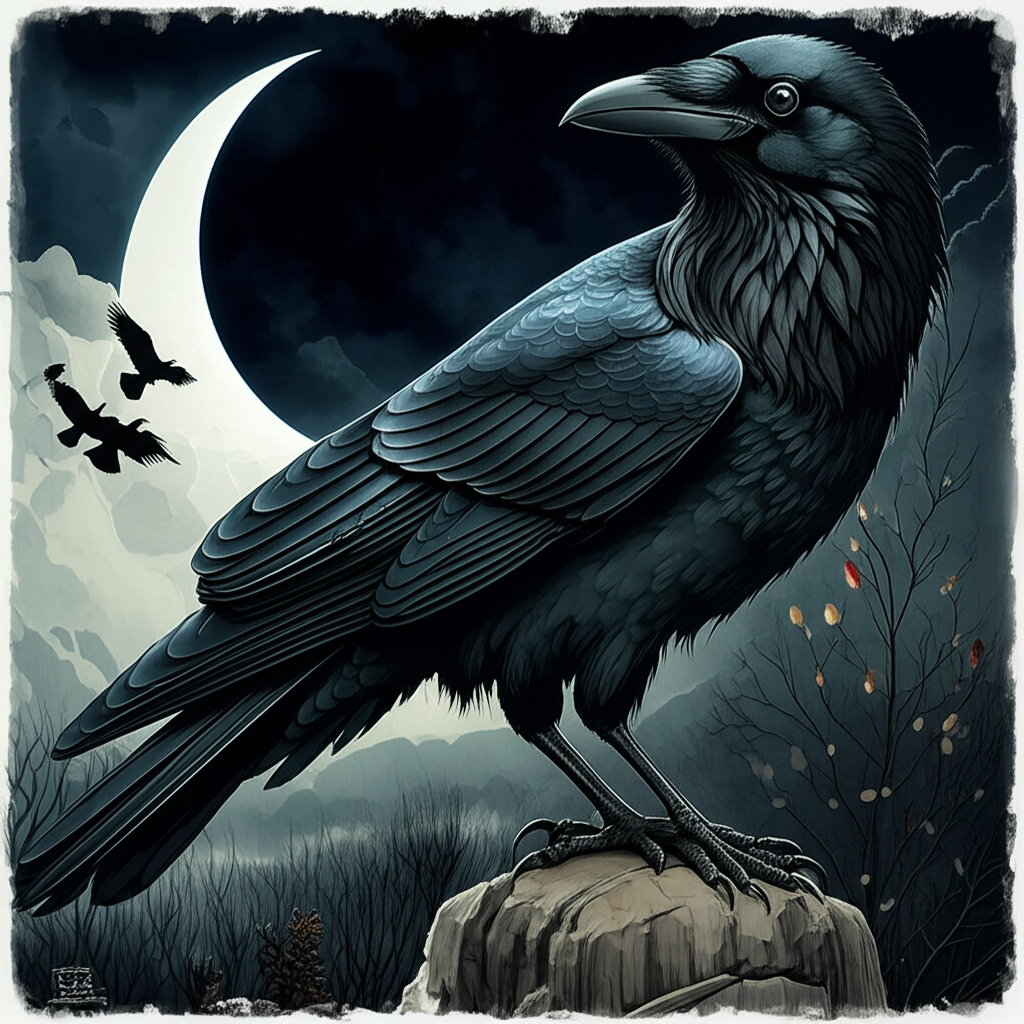
Ravens, intelligent and striking birds, have long been associated with superstition and folklore across numerous cultures. Their dark plumage, haunting calls, and scavenging habits have contributed to a complex and often negative symbolic interpretation, linking them to death, witchcraft, and ill omens.
Historical Background: The association of ravens with superstition dates back millennia. In Norse mythology, Huginn and Muninn (often translated as ’thought’ and ‘memory’), were the pair of ravens who served as the eyes and ears of Odin, the Allfather. They flew across the world, Midgard, gathering news and knowledge to report back to him, highlighting an early perception of ravens as messengers and gatherers of information. However, even within this seemingly positive context, the association with a powerful, perhaps inscrutable deity hints at a deeper, more mysterious perception. In Irish mythology, the Morrigan, a goddess associated with war, fate, and death, frequently adopted the form of a raven, further solidifying the bird’s connection with mortality and the supernatural.
Cultural Beliefs: Across many cultures, ravens have been perceived as omens, often of a negative nature. In medieval Europe, they were primarily seen as harbingers of death. Their jet-black feathers, reminiscent of the night, linked them to the realm of witches, demons, and the Devil. This association was particularly strong in rural communities where folklore held that ravens could be witches who had transformed themselves to spy on those they intended to harm. Seeing a raven perched on the roof of a house where someone was ill was considered an almost certain indication that the patient would not recover. These beliefs demonstrate the raven’s central role in the fear of the unknown and the association of death with the supernatural.
Evolution of the Superstition: The earliest superstitious beliefs surrounding ravens were not always exclusively negative. Some cultures initially regarded them as prophetic, though not necessarily sinister. Virgil’s Eclogues, dating back to around 40 BC, includes a passage where a raven’s warning averts a potentially deadly conflict, illustrating a perception of the bird as a beneficial advisor. However, this more positive view gradually faded, particularly as Christianity spread across Europe, associating dark creatures with evil. By AD 77, Pliny the Elder, in his Natural History, described ravens as the ‘very worst sort of omen’ when their calls sounded choked or stifled. Shakespeare’s famous reference to the raven in Macbeth, where it ‘croaks the fatal entrance of Duncan,’ further cemented the bird’s reputation as a messenger of doom.
Modern Interpretations: While modern society is generally less overtly superstitious, the raven’s symbolic association with death and ill omen persists. This enduring perception is partly due to the raven’s carrion-eating habits. In rural England, the raven’s cry was often interpreted as sounding like ‘Corpse! Corpse!’ The bird’s habit of waiting near wounded or dying animals before feasting on their carcasses reinforced its image as a creature of death. Even today, ravens retain a powerful presence in literature, art, and popular culture, often embodying themes of mystery, darkness, and the supernatural, continuing their legacy as a bird deeply intertwined with superstition and symbolism.